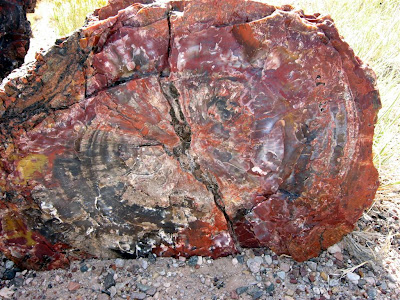
No matter how many pictures or videos you may have seen of the Grand Canyon, nothing can prepare you for actually experiencing it's vastness.
We chose to visit the South Rim this year, perhaps we'll get to the North Rim next year. It is 10 miles across the canyon to the North Rim, as the eagle flies, but 215 miles by road.
The south rim has an elevation of 7000 feet, and the weather was perfect today.
We hiked along the Rim Trail, which runs several miles next to the canyon's edge.
 Many visitors to the area either hike or take a mule trip to the bottom of the canyon. It takes two days to hike down and back, and they can choose to stay at the Phantom Ranch. This facility was built in 1922 from uncut river stones from the canyon bottom and materials packed in by mule. It sits one mile straight down from the rim, but requires a hike or ride between 7 and 10 miles, depending on which trail is taken.
Many visitors to the area either hike or take a mule trip to the bottom of the canyon. It takes two days to hike down and back, and they can choose to stay at the Phantom Ranch. This facility was built in 1922 from uncut river stones from the canyon bottom and materials packed in by mule. It sits one mile straight down from the rim, but requires a hike or ride between 7 and 10 miles, depending on which trail is taken.Can you spot the trail far below?


 After a picnic lunch, we took the 25 mile drive to the East Entrance. The historic building known as the Watchtower sits at the edge of the rim. Built in the early 1900s, the structure was designed to look like a Pueblo Indian tower. Constructed of stones from the rim, it blends in beautifully with the surrounding landscape and looks as if it's been there forever. The tower has an observation deck, and inside steps leading to the top. The interior is decorated with native designs.
After a picnic lunch, we took the 25 mile drive to the East Entrance. The historic building known as the Watchtower sits at the edge of the rim. Built in the early 1900s, the structure was designed to look like a Pueblo Indian tower. Constructed of stones from the rim, it blends in beautifully with the surrounding landscape and looks as if it's been there forever. The tower has an observation deck, and inside steps leading to the top. The interior is decorated with native designs.For more of our photos of the canyon, longhorn sheep and watchtower, take a look at our slideshow:
















































